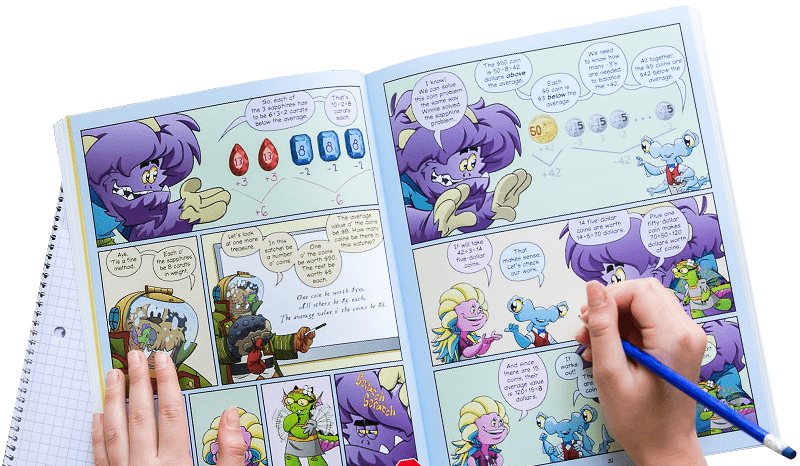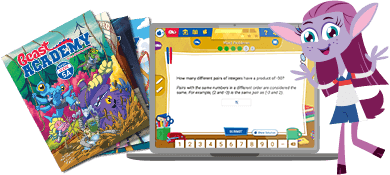Troll Hole
Look out for the troll hole as you write numbers, then add up what's left after the troll feasts.
Instructions
Draw a 19-circle hexagon. (Optional tip: trace a quarter.)

Players take turns writing numbers in the circles, starting with 1, then counting up. Each player writes in a different color. After both players have written the numbers 1-9, there will be one empty circle left: the troll hole! (Bonus: Somebody gets to draw the troll!) The troll "eats" the numbers in the circles that touch the troll hole. Cross these numbers off.

Now add the remaining numbers. This is a great chance to find pairs that add to 10. In the example above, Blue could add 7 + 3 = 10, 8 + 2 = 10, and 9 + 1 = 10 first, for a total of 30, then add the 5 + 4 = 9 remaining, for a final total of 39. Red could add 8 + 2 = 10 and 9 + 1 = 10 first, for a total of 20, then add the 5 + 4 + 7 = 16 remaining, for a total of 36. Whoever has the highest sum wins. Blue wins this game!
After a few rounds, notice that there is an easier way to discover who won the game: add the crossed-off numbers only. Whoever has the smaller sum of crossed-out numbers wins. In the game above, Blue crossed off 6, and Red crossed off 6 + 3 = 9. Since Red crossed off a higher sum, Blue wins!
Don't forget: it's Beast Academy Playground, not Beast Academy Study Hall. Change the rules, be silly, make mistakes, and try again. The Variations and Learning Notes are here for you if you want to dive deeper, but not all of them apply to learners of every age. The most important thing is to have fun.
This game is adapted from "Black Hole" by Walter Joris.What do you think of this activity?
We're always looking to improve. Submit your feedback to us below.
- paper
- markers (2 colors)
- addition
- counting
- subtraction
- strategic thinking
- pairs that add to ten
- writing numbers
- skip-counting
- MP2
- MP8
- K.CC.A.3
- K.OA.A.4
- 1.OA.C.6
- 2.OA.B.2

Ready to level up?
Keep problem solving with Beast Academy’s full math curriculum for students ages 6–13. Check out our captivating comic book series and immersive online platform.
LEARN MOREBring problem-solving to your classroom
Keep your entire class engaged with a full book and online math curriculum, for students ages 6–13. 98% of teachers say they’re satisfied with Beast Academy.
LEARN MORE



Ready to level up?
Keep problem solving with Beast Academy’s full math curriculum for students ages 6–13. Check out our captivating comic book series and immersive online platform.
LEARN MOREBring problem-solving to your classroom
Keep your entire class engaged with a full book and online math curriculum, for students ages 6–13. 98% of teachers say they’re satisfied with Beast Academy.
LEARN MORE
Sign up to be notified when new videos are released.
















































